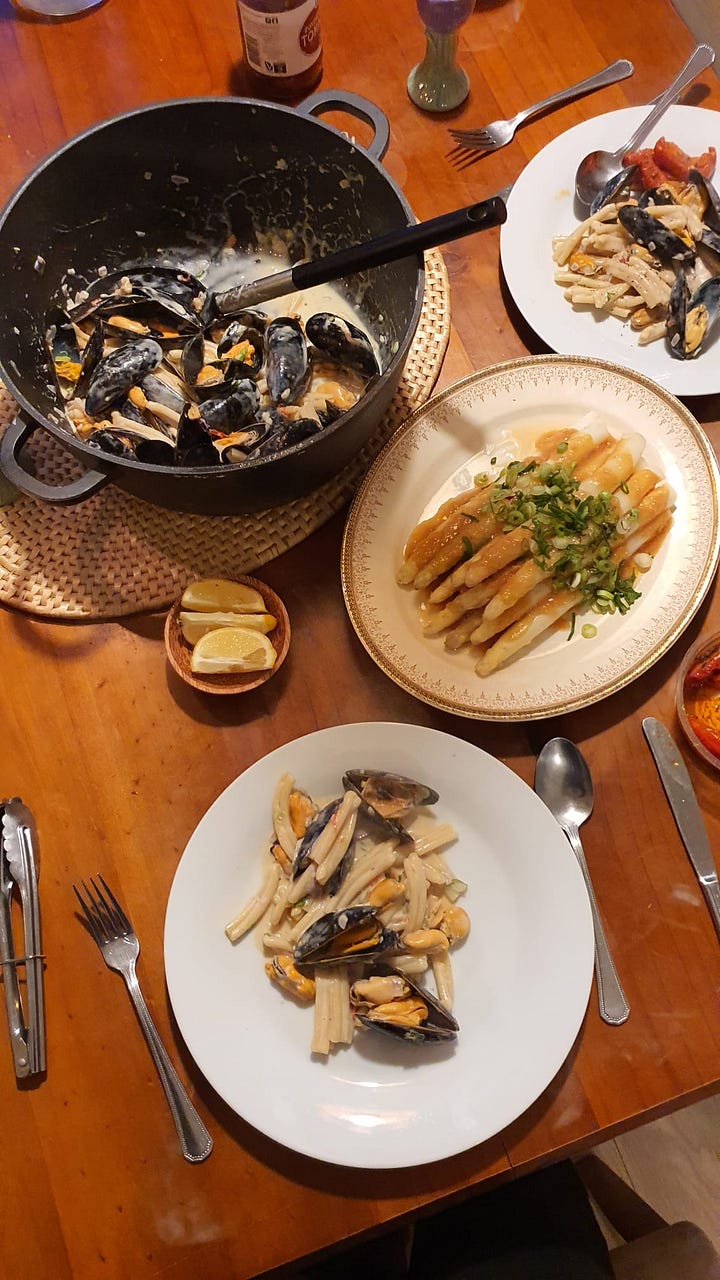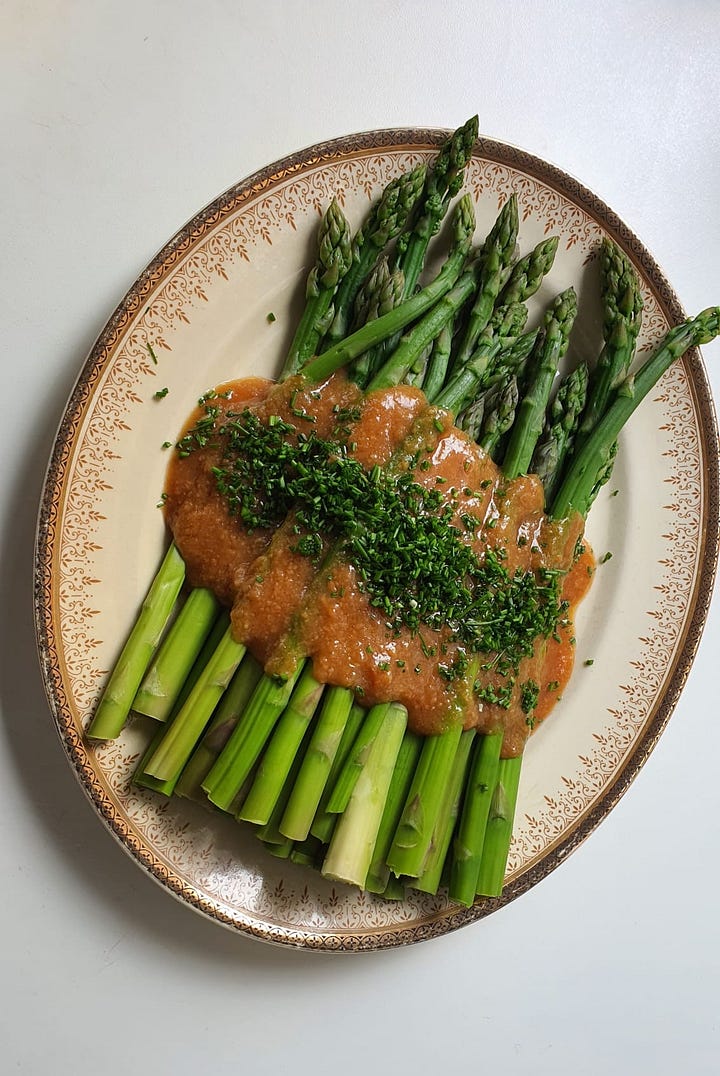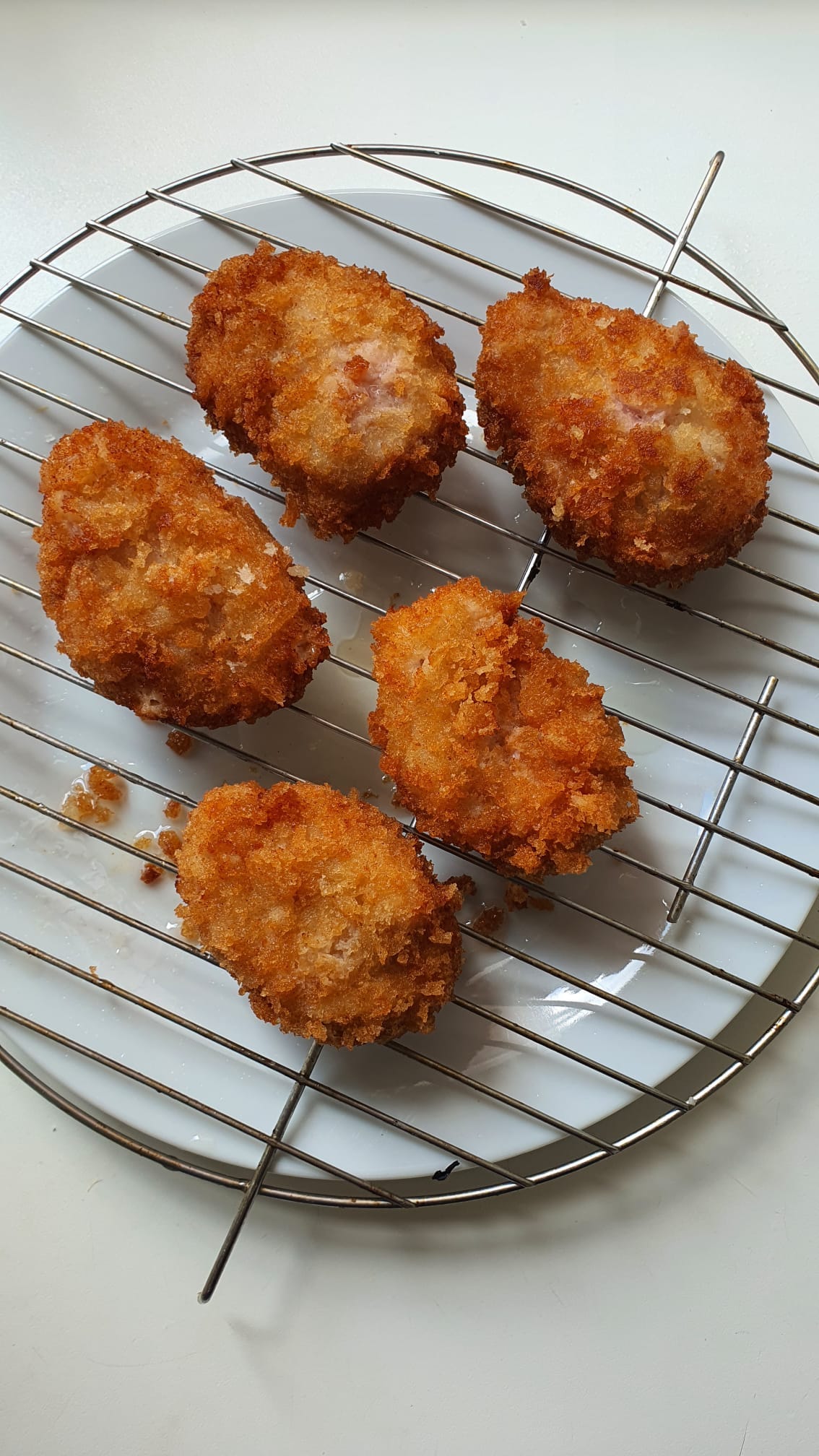A simple way with asparagus
plus three commandments for better tonkatsu
What I look forward to every spring is the arrival of asparagus at the markets — white, green, fat, thin… I love them all. When they are at their peak, you really don’t need much. Nor do you want to do much. Seasonal produce shines when the preparation is kept simple. In Melbourne, at the restaurant I worked at, there was a dish that I particularly loved. The rest of the year, it was a broccolini dish, but come spring, the vegetable was replaced with asparagus and the fleeting nature of the season made it extra special.
We would spend a good portion of the day carefully prepping them, peeler in hand, before they were steamed. I always loved the way they looked when they emerged from the steam-oven, as vibrantly green as a garden pea. When an order came in, the steamed spears were swiftly grilled over charcoal to give them a kiss of smoke, before being topped with housemade mayonnaise, fat cubes of top-quality bacon (no rashers here!), finely diced egg, and lots of cracked pepper.
I’ve made the dish countless of times at home because it is just simply so classic, so good. But frankly, it takes a bit of forethought to purchase slab bacon and light some charcoal. Most days, I veer towards something simpler. This quick miso dressing is one of my favourites to spoon over asparagus, and it’s the sort of dish that works just as well with rice as it does with pasta.


Asparagus with miso ginger sauce
Serves 4 | Vegan | Takes 15 minutes
700g (1½ pounds) green or white asparagus
3 tablespoons miso
3 tablespoons mirin
1 tablespoon lemon juice
2 teaspoons grated ginger
Thinly sliced chives or spring onion
Prepare a steamer by partially filling a deep saucepan, pot, or wok with water and bring it to a boil over high heat. Line up the asparagus and cut off the woody bottom inch or so with a knife. If the spears are thick (such as with white asparagus), peel all around the bottom half of the trimmed spears to remove any fibrous peel. For thinner spears, no peeling is required.
Arrange the asparagus on a heatproof serving dish and steam for 3 to 4 minutes, or until they are fork-tender.
While the asparagus steams, stir together the miso, mirin, lemon juice, and grated ginger. Taste and adjust with more mirin or lemon juice if desired. The dressing should have a loose, spoonable consistency; add a little water if needed.
When the asparagus is tender, remove the dish from the steamer and carefully tip any accumulated water off. Spoon the dressing over the asparagus and garnish with the chives or spring onion.
When my mom was recently in the Netherlands, we indulged in so much asparagus. For lunch one day, I made tonkatsu to accompany the asparagus. Tonkatsu is one of those dishes that is irresistible, even to someone who’s as health-conscious as my mom. Who can say no to pork in a crispy, airy crust and served with a sauce that packs a savoury punch? It’s such a simple thing to whip up, you hardly need a recipe for it (though I provide recipes for the tonkatsu and the accompanying homemade sauce below). That said, here are three commandments I abide by when making tonkatsu at home.
1. Use the right cut of pork, cut to an appropriate thickness.
You can make tonkatsu with a variety of cuts, but my favourite are either tenderloin for unparalleled tenderness, or pork shoulder / pork belly for juicy fattiness. Even more crucial than the cut of pork, in my view, is the thickness of each piece of pork: at least 1-inch (2½ cm) thick. Any thinner and the pork dries out and overcooks by the time the crust has a chance to brown handsomely.
Most pieces of pork at the supermarket tend to be sliced way too thinly, so my suggestion is to either enlist the help of a butcher or to purchase a larger, whole piece of meat and slice it into the appropriate thickness yourself. That’s what I did for this tonkatsu pictured above: I purchased a long slab of tenderloin and sliced it into thick medallions. The width of each is no issue, what matters is that they are suitably thick.



